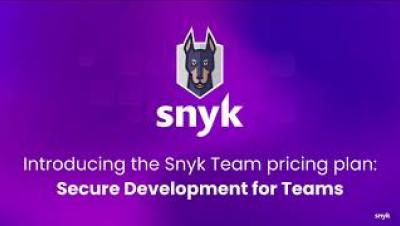Security | Threat Detection | Cyberattacks | DevSecOps | Compliance
DevOps
23andMe's Yamale Python code injection, and properly sanitizing eval()
JFrog security research team (formerly Vdoo) has recently disclosed a code injection issue in Yamale, a popular schema validator for YAML that’s used by over 200 repositories. The issue has been assigned to CVE-2021-38305.
Get Cybersmart with JFrog This October
We live in a world of increasingly connected devices – phones, digital assistants, smart watches, cars, thermostats, refrigerators, windmills, and more. More than 50% of the world’s population is now online and two-thirds own a mobile device, according to the World Economic Forum. Additionally, the codebase of today’s applications typically consists mainly of open source components – exposing them to greater risk of hacking than ever before.
An Introduction to the Snyk Team pricing plan
Applying Least Privilege in Kubernetes II Jonathan Canada
The Vulnerability Conundrum: Improving the Disclosure Process
The vulnerability disclosure process involves reporting security flaws in software or hardware, and can be complex. Cooperation between the organization responsible for the software or hardware, and the security researcher who discovers the vulnerability can be complicated. In this blog we’ll look at the vulnerability disclosure process, the parties involved and how they can collaborate productively.
Join Snyk in celebrating 31 days of Cybersecurity Awareness Month 2021
Today’s the first day of October as well as the first day of the 18th annual Cybersecurity Awareness Month. The purpose of Cybersecurity Awareness Month is not only to raise awareness about the importance of cybersecurity, but also to inspire people to improve their cybersecurity posture: whether that be through implementing multi-factor authentication, not clicking that suspicious email attachment, or even writing code more securely by utilizing a tool like Snyk. =)
Low Latency Identity-aware Access Proxy in Multiple Regions
A multi-protocol access proxy is a powerful concept for securing access to infrastructure. But accessing numerous computing resources distributed across the globe via a single endpoint presents a latency challenge. Today we are announcing that the hosted edition of Teleport Access Plane is now available in 5 regions all over the world.
What is a Proxy Server? How it Works and Critical Risks in 2021
A proxy server is an intermediary server that retrieves data from an Internet source, such as a webpage, on behalf of a user. Proxy servers have many different uses, depending on their configuration and type. Common uses include facilitating anonymous Internet browsing, bypassing geo-blocking, and regulating web requests. Like any device connected over the Internet, proxies have associated cybersecurity risks that users should consider before use.
Using Zero Trust to Mitigate Supply Chain Risks
Software supply chain attacks have been on the rise lately. With the current pervasiveness of third-party and open source libraries, which presumably developers cannot control as strongly as the code they create, vulnerabilities in these software dependencies are causing serious security risks to applications. Supply chain attacks abuse the inherent trust that users have with a software provider.











